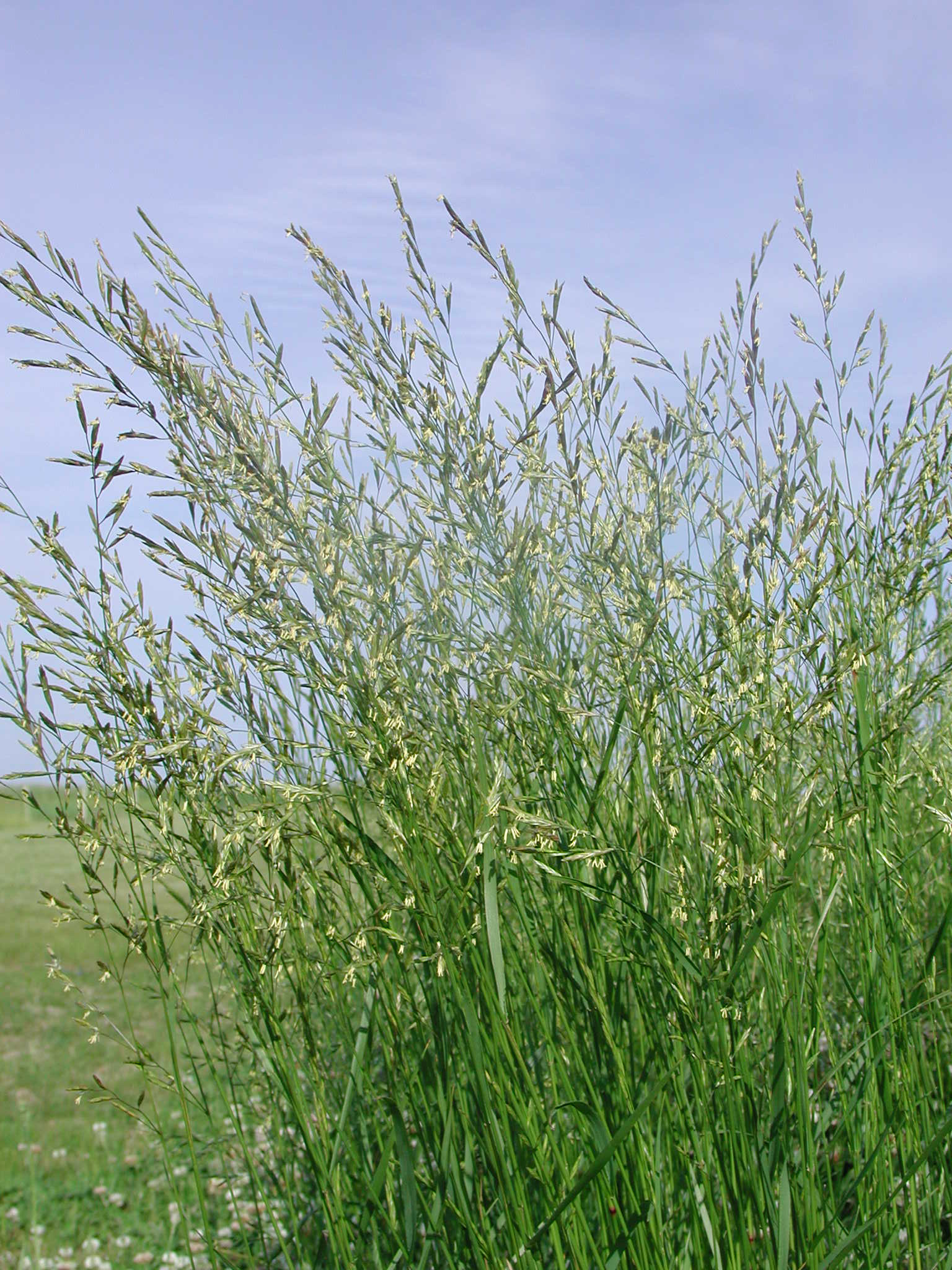| Scientific name: | Festuca pratensis |
| Cultivars: | Azov, and Hidden Valley (developed in WI for high forage under grazing).
Late maturing: LiHerold, Tetrax, KF galaxy |
| Origin: | Northern Europe; Mountains of southern Europe. |
| Growth Habit: | Bunch type with short rhizomes, spreading by tillers |
| Life Cycle: | Perennial |
| |
| Use |
| |
| Production: | ~1 to 1.5 ton DM/acre, which can be double with the application of manureGrows well early spring, and into late fall. Superior to to KY bluegrass during the summer months, but not as good as native bluestem pastures during summer |
| Nutritive Value: | Superior; Highly palatable, high protein and digestibilityContains a non-toxic endophyte that does not produce alkaloids that are toxic to livestockHighly preferred by horses |
| |
| Identification |
| |
| Seed Head: | Panicle, not as drooping or open as bromegrass; it takes 28-30 days from heading to maturing |
| Seed: | 24 lb/bushel
|
| Shoot: | 15 to 24 inches tall on upland soil and 3+ feet on fertile soils |
| Leaf: | Intense green color, glossy on the abaxial side (underside), also serrated marginsPronounced leaf venation (ridge) but less than Tall Fescue.Many basal leavesPart of broadleaf fescue type (together with ryegrasses)
|
| Auricles: | Present, small, narrow |
| Ligule: | Membranous and small |
| |
| Adaptation |
| |
| Soil: | Heavy clay soils; not adapted to light sandy soils |
| pH: | ~5.5 to 7.0 |
| Moisture: | Medium to high drought tolerance as well as floodingAdapted to wet places better than other forages like red clover, timothy or KY bluegrass |
| Temperature: | Superior cold tolerance. Long-term persistence under severe winter conditions with low temperatures, dry winds, and little snow cover |
| Other: | Grows well in mixes with other forages among them bromegrass, KY bluegrass, orchardgrass, timothy, ryegrass, alfalfa, alsike, red and white clover; |
| |
| Establishment - Management |
| |
| Seeding rate: | 25-35 lb/acre (alone); 10-15 lb/acre (mixes), or if planting with a drillCross-drilling is recommended with 10-15 lb/acre each way |
| Seed cost: | $3/lb; $75-100/acre (alone); $30-45/acre (in mixes) |
| Planting date: | Mid August to Mid September is recommended; it provides a good start in the fall and insures a seed crop the following seasonSpring seeding can be done but in getting the grass started there is a loss of a crop year |
| Planting depth: | 1/4 to 1/2 inch, on well prepared seedbed |
| Frost seeding: | Yes |
| Fertilization: | Follow soil test recommendations.40-60 lb N/acre/harvest |
| Grazing: | Well adapted to frequent grazing,
Graze for a short time in spring and again in the fall as not to affect the seed harvest.
Minimum problem with bloating when alfalfa is less than 50% |
| Hay: | Yields less than Tall Fescue or Orchardgrass
Easy to dry for hay
Can be cut high for seed, which leaves a good hay crop of leaves to be cut later.
Harvest for seed is at the stage when the seedhead begins to droop due to ripening weight, usually around July |
| |
| Notes |
| Introduced to the US since 1800's.Can be affected by rustGreat for improving soil textureSeed can be contaminated with cheatgrass (Bromus spp.) because seeds are very similar (need to be careful when outsourcing the seed) |
| |
| Photos |
|

Meadow fescue. Photo credit: M. Casler
|

